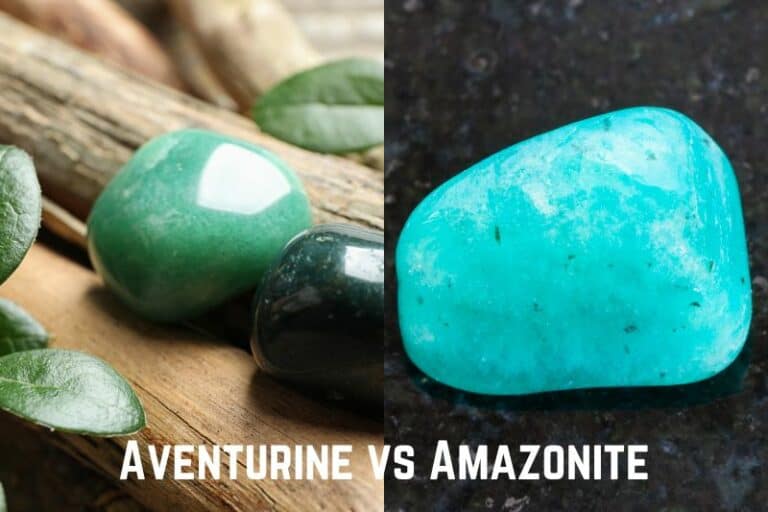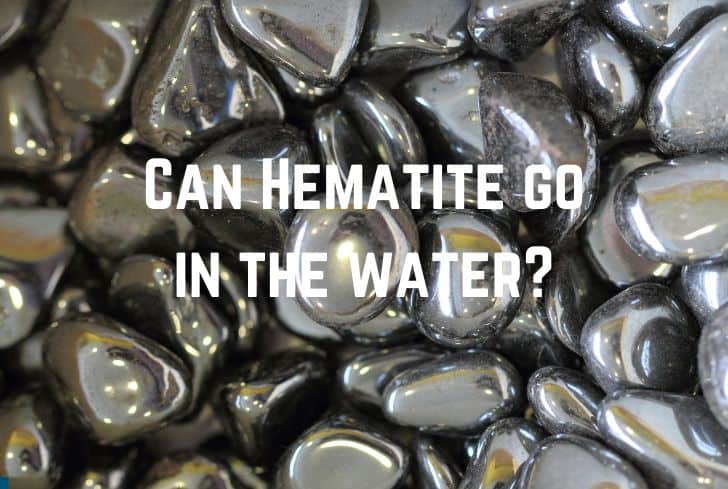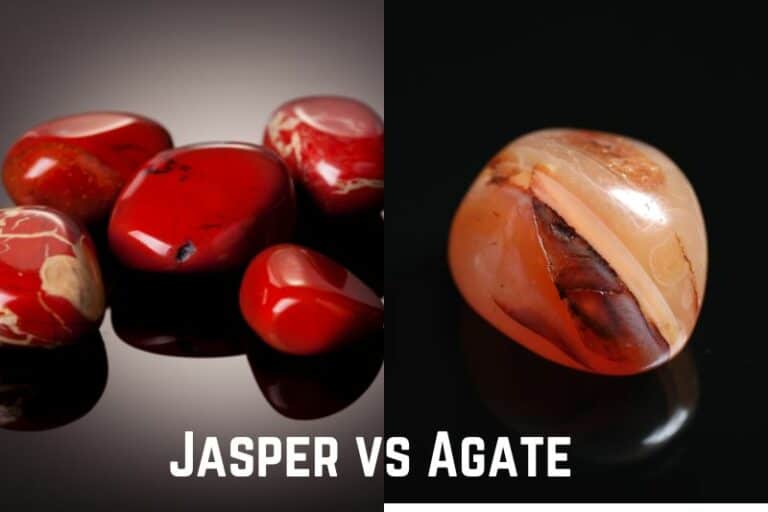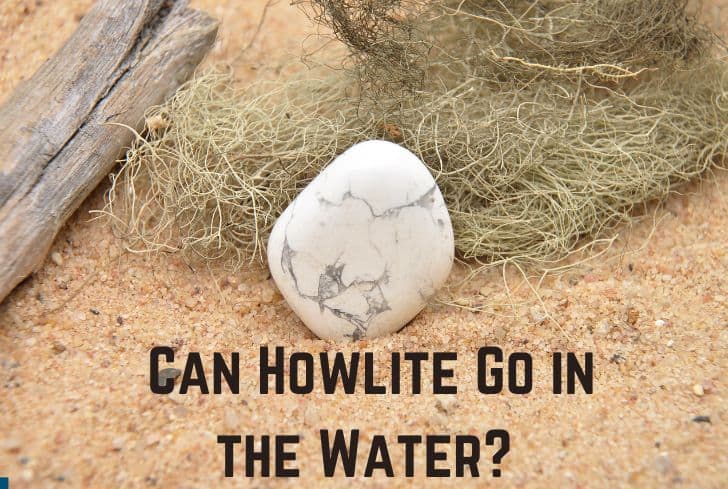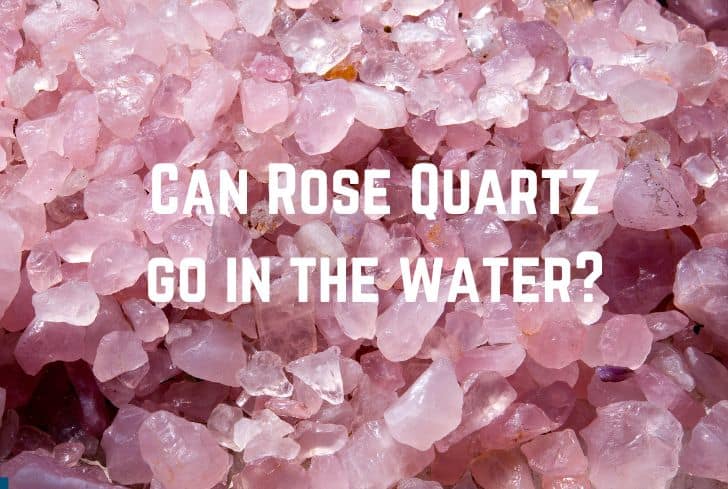Can Sunstone Go in the Water? (And in the Sun?)
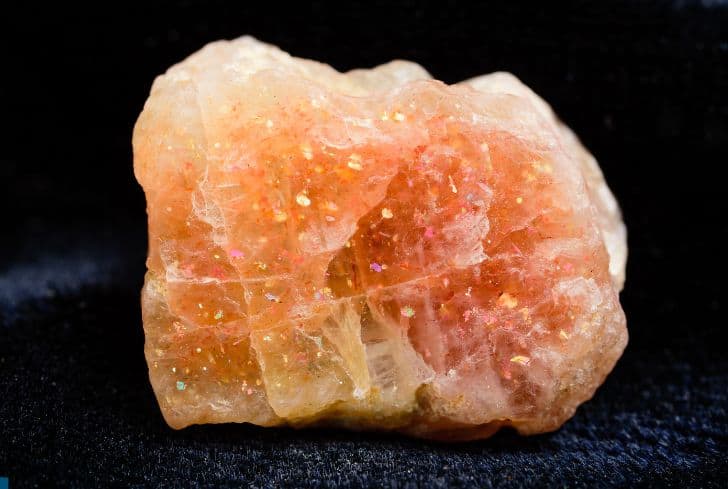
Sunstone is a beautiful gemstone of the plagioclase feldspar group of minerals. It comes in several colors like yellow, red, and colorless, and it has a gorgeous spangled appearance because of an optical effect called aventurescence.
In this article, we will look at sunstone’s interaction with water. We will talk about the gemstone’s properties and origins. We will also discuss various ways of maintaining this gemstone (cleaning, polishing, handling, etc.) and finally look at ways of verifying the authenticity of your sunstone.
Can Sunstone Crystals Go in the Water?
Yes, sunstone can be put into water, although it should not be immersed for a long time. On the Mohs Hardness scale (a measure of a mineral’s resistance to scratching), sunstone has a hardness of 6-7. Since the value is greater than 5, the stone can be safely put into water for a short time.
Cleaning sunstone with water is much better than using any kind of harsh chemical, as it can wear out the surface of the rock.
But the stone should not be left in water for a long time. Otherwise, contaminants and algae can dull its surface or penetrate it, causing irreparable damage. Keep reading to find out how to properly clean your sunstone using water.
Where is Sunstone Found in the World?
Sunstone is found in Sweden, Southern Norway, Canada, and India. It is also found in certain areas of the United States such as Oregon, which now boasts of its variant: Oregon Sunstone.
Until recently, sunstone was rare because of which it was quite expensive. However, when large amounts of the stone were found in Russia and Norway, it helped to bring down the price significantly.
What are the Properties of Sunstone?
The middle part of the sunstone sparkles, with colors being light around the edges and darkest in the center. Sunstone has a property known as aventurescence, an optical reflective effect. Tiny mineral platelets within the stone bring about this beautiful shimmering, metallic glitter.
These tiny particles inside the sunstone are inclusions (material trapped in a mineral) of red copper, goethite, and hematite. They are present in the form of minute scales of different shapes (hexagonal, rhombic, etc.) and lie parallel to the principal cleavage plane.
The Oregon sunstone that we talked about earlier exhibits the schiller effect, and its color is due to the inclusions of copper. Besides Oregon, there are two variants of the sunstone: the oligoclase sunstone and the orthoclase sunstone.
History provides an excellent reference to this shimmering beauty. In the 16th century, Pope Clement VII wore a stone that is said to have possessed “a golden spot that moved in relation to the heavens.” The beauty of the sunstone cuts across ages.
How do You Clean a Sunstone?
As discussed earlier, sunstone can be cleaned with water. But, given that its hardness is not very high, it’s important to be cautious. Here are the steps to clean the stone:
- Make a solution of warm water and gentle dish detergent.
- Let the sunstone soak in it for a while.
- Use a soft brush to clean the stone.
- Let it dry on a soft cloth, ensuring that it’s kept away from other jewelry to prevent scratching.
Following these steps should bring back the luster of the stone while also keeping it safe.
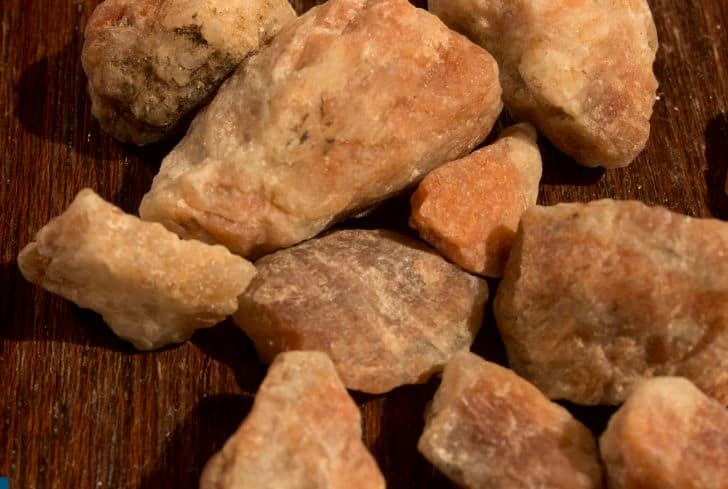
How to Polish Sunstones?
It is usually quite convenient to polish or cut sunstones, except for the few times when you unravel the cleavage plane. Even in such situations, you can change to a different grit lap or reverse the direction of the lap to fix the issue. Here are the steps you need to follow:
- Cut the stone with a 600 grit lap.
- As far as cutting is involved, the best choice is to orient the stone in a way that the color will be at the center of the stone, slightly below the girdle, in the pavilion part.
- Use cerium oxide paint on a plexiglass lap to polish it.
- You can also pre-polish the stone with a 1200 grit lap for faster results.
Check out below wonderful video by Bopie’s Jewelry to see how a sunstone is cut and polished.
Can Sunstone Go in the Sun?
Yes, certainly. You can put your sunstone in the sun, and it is even encouraged. However, it’s best not to put it under harsh, full sunlight, but in a gentle gleam.
There are many beliefs associated with this gemstone and its relation to the sun. The name itself is based on the sun. Because of the reddish-orange color, the stone is also known as goldstone.
The stone has great significance in Nordic and Native American cultures. The former saw the shimmering light of the stone as a form of spiritual guidance, while the latter considered it to be a source of healing, energy and joy.
Many believe that the stone is a divine representation of the rejuvenation of our masculine traits of us, irrespective of our gender. That is, it brings out self-confidence and values of leadership.
While these are matters of cultural belief, it’s good to acknowledge that scientific properties are not the only concerns of human beings. Often, we value things for their metaphysical significance, and given the glimmering beauty of the sunstone, it’s no surprise that it is held in high regard.
Does Sunstone Break Easily?
Yes, sunstone is not very hard and can be scratched easily. It is not a very tough stone and is therefore also prone to breaking. These reasons make it slightly difficult to use sunstone in jewelry that is worn daily.
Yet, you can still get sunstone jewelry if you use a protective setting like a bezel, flush, or halo. Setting the sunstone to a lower level than the metal is also helpful. As said earlier, the sunstone should not be worn during strenuous physical activity.
With proper care, sunstone can last for a lifetime. And even if it does get damaged, it can be replaced at an affordable price, through an easy process. Given the beauty of the sunstone, it is worth trying it out as jewelry.
Is Sunstone Expensive?
Sunstones are quite affordable. You can get small cabochons of orange color for under 50$. For the Oregon sunstone, pale yellow to colorless ones come for a few dollars to 20$ per carat for a custom cut. Bicolor stones or red stones with nice faceting can go over 1000$ per carat.
Four factors determine the price of sunstone:
1. Colour: Sunstones come in various shades of brown, red, and orange. Darker sunstones are usually preferred over paler sunstones. The most in-demand and expensive sunstones are deep red, deep green, and intense colors.
2. Clarity: In most gemstones, inclusions are seen as flaws, and they devalue the price. But in the case of sunstones, it is the opposite: inclusions enhance their beauty by creating the aventurescence effect. Small inclusions provide a golden sheen, while large inclusions create shimmering reflections.
3. Cut: Sunstones have to be cut precisely to enhance the orientation of the inclusions within, so this is the most important factor. These particles reflect light and bring about a beautiful sparkle. This is all the more so for the Oregon variant, whose copper inclusions are flat.
4. Carat Weight: Sunstones come in a variety of sizes, and because it’s an affordable gem, the size impacts value relatively less. Your preferences will determine the size. Most sellers will highlight the width and length of the stone, instead of the carat weight.
All in all, sunstones can fit pretty much all budgets, although the darker, unique ones with great aventurescence can cost a lot.
How do I Know if Sunstone is Real?
Frankly, sunstone is not a stone that is usually imitated or faked. This is because, despite its rarity, it’s not a very expensive gemstone. Still, you can follow the general rules of testing the credibility of the stone:
- The real color of the stone: Sunstone comes in shades of red, orange, and brown. Under a microscope, you can find out if your stone has unusual opacity or color concentrations.
- Seller’s credibility: Always demand an appropriate government lab certificate, which shows the authenticity of the stone and any treatments it has gone through.
- Shape & design: Ensure that the stone is well-cut without any marks.
- Transparency: Make sure that the transparency is natural and not created by heating or glass-filling.
How to Take Care of Sunstone Pieces and Stones?
It’s best not to use harsh chemicals on your sunstone pieces or jewelry. Bleach or acids can easily damage the stone because it is not very hard. High heat can also damage the stone, so it’s advisable not to put it under full sunlight. Ultrasonic cleaning tools can also break the brittle stone.
All you need to use is a solution of water and gentle dish detergent. You can also use a brush to clean it, and then let it dry. This will bring back the shine of the stone, while also keeping it safe.
Since sunstone has a moderate hardness, it should not be worn during any intense physical activity, such as exercising. A blow can easily damage the gem.
Also remember that given the moderate hardness (6-7 on the Mohs scale) of the stone, it should not scratch against other gemstones and should be kept separate.
Conclusion
In this article, we have looked at sunstone’s interaction with water. We began by looking at some of the properties of the stone, especially its beautiful aventurescence. We also discussed the factors that determine the value of the stone. Finally, we looked at the ways to polish, clean, and maintain the stone.

